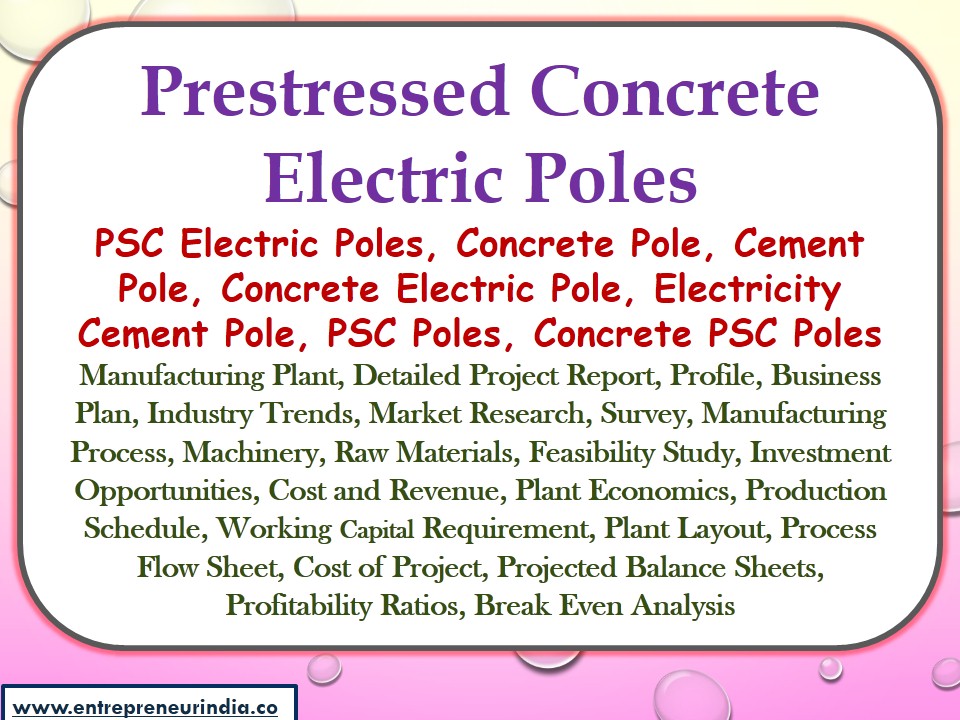
Electricity plays a vital role in our daily lives, and one essential component of electrical distribution systems is the pole. Among the various types, PSC Electric Poles have gain popularity due to their durability and strength. These poles are preferre in power transmission and street lighting due to their long-lasting performance and resistance to harsh environmental conditions.
Understanding the Manufacturing of PSC Electric Poles
Pre-Stress Concrete (PSC) Poles are made from a combination of high-tensile steel wires and concrete. This combination enhances the strength-to-weight ratio and ensures greater load-bearing capacity. The manufacturing process involves multiple steps, each critical to the quality and performance of the pole.
See Also –Citrus Oil Extraction
Step 1: Material Selection
The process begins with selecting high-grade raw materials. Cement, sand, coarse aggregates, water, and high-tensile wires are essential. Materials must meet specific IS standards to ensure consistency and performance in the final product. Clean and test components contribute to strong and reliable PSC Electric Poles.
Step 2: Cage Preparation
The next step is preparing the steel reinforcement cage. High-tensile wires are cut and wound into specific shapes. These wires are pre-stress using hydraulic jacks, ensuring they hold tension even after the concrete sets. This pre-stressing makes the poles highly resistant to bending and environmental stress.
Step 3: Moulding
Once the reinforcement is ready, it is place in pre-fabricate moulds. These moulds are shape according to the require size and specifications of the pole. Spacers and other accessories are added to maintain correct alignment and avoid displacement during the casting process.
Step 4: Concrete Pouring
High-quality concrete is prepare using a control mixture of cement, sand, aggregates, and water. The mix is pour into the moulds while using vibration techniques. Vibration eliminates air pockets, improves density, and ensures a smooth surface finish. This step is crucial for the long-term durability of PSC Electric Poles.
Step 5: Curing
After pouring, the poles undergo a curing process. Curing ensures proper hydration and hardening of the concrete. This process typically lasts 7 to 14 days, depending on temperature and humidity. Proper curing enhances strength and minimizes the risk of cracks.
Step 6: Testing and Inspection
Each batch of poles is test before dispatch. Dimensional checks, bending tests, and load tests are conduct. The goal is to ensure that each pole meets structural requirements and quality standards. Only poles that pass these inspections are approve for installation.
Advantages of PSC Electric Poles
-
Durability: These poles can withstand extreme weather conditions, chemical attacks, and corrosion.
-
Strength: High-tensile wire reinforcement provides superior mechanical strength.
-
Low Maintenance: Unlike steel poles, PSC poles require little to no maintenance.
-
Eco-Friendly: Manufactur using natural materials, these poles have a smaller environmental footprint.
-
Cost-Effective: Long service life results in lower lifecycle costs compare to traditional alternatives.
Applications of PSC Electric Poles
PSC Electric Poles are used in a wide range of applications. Their primary use is in the transmission and distribution of electrical power. However, they are also widely used for:
-
Street lighting in urban and rural areas
-
Telecommunication lines
-
Solar lighting installations
-
Electrification of railways
-
Agricultural power lines and water pump networks
Their versatility and strength make them suitable for various infrastructure projects.
Business Potential in PSC Pole Manufacturing
With the increasing demand for electrification, especially in rural areas, the demand for PSC Electric Poles has grown substantially. Government schemes such as Saubhagya and UDAY have push the need for durable poles in remote areas. This offers a great opportunity for entrepreneurs looking to invest in infrastructure-relate businesses.
Setting Up a PSC Pole Manufacturing Plant
Land and Location
A medium-sized manufacturing unit requires about 1–2 acres of land. The site should have easy access to raw materials, transportation, and electricity. Proximity to target markets helps reduce logistic costs.
Machinery and Equipment
Key machines require include:
-
Concrete mixers
-
Moulds of various pole sizes
-
Vibrators
-
Hydraulic jacks for pre-stressing
-
Steam curing chambers (optional)
-
Overhead cranes for handling
Manpower
Skill technicians are require for steelwork, casting, and curing. Unskill workers can be train for support tasks. A team of 10–20 people can efficiently run a medium-scale plant.
Licenses and Compliance
The business must adhere to the Bureau of Indian Standards (BIS) and acquire pollution control and safety certifications. An IEC code may be require for exporting poles to international markets.
Investment and Profit Margin
Setting up a small PSC Electric Poles manufacturing unit can require an initial investment of ?30–?50 lakhs. This covers land, equipment, labor, and operational costs. Return on investment (ROI) depends on production capacity, market demand, and government project involvement.
On average, a pole costs ?2,000–?3,500 to produce and sells for ?4,000–?6,000. This allows for decent profit margins, especially with bulk government or private orders.
Marketing Strategy
To succeed in the PSC Electric Poles business, building relationships with local electricity boards, infrastructure developers, and contractors is crucial. Participating in tenders, offering quality assurance, and maintaining a steady supply chain can set your brand apart.
Digital marketing and a professional website also help establish credibility. Partnering with renewable energy installers and telecom companies can open up additional markets.
Future Scope of PSC Poles
India’s rapid urbanization, growing energy demands, and Smart City initiatives will keep the demand for PSC poles rising. Moreover, the push toward renewable energy solutions increases their use in solar panel installations.
In export markets, African and South Asian countries also rely heavily on such infrastructure. With BIS-certified quality and competitive pricing, Indian manufacturers can access a large customer base.
See Also – Start Meat Processing Business
Final Thoughts
Establishing a PSC Electric Poles manufacturing business is both technically feasible and commercially rewarding. The increasing demand for efficient electrical infrastructure ensures long-term sustainability and profitability in this field. With proper planning, quality control, and customer trust, entrepreneurs can build a reliable and scalable business around PSC poles.





